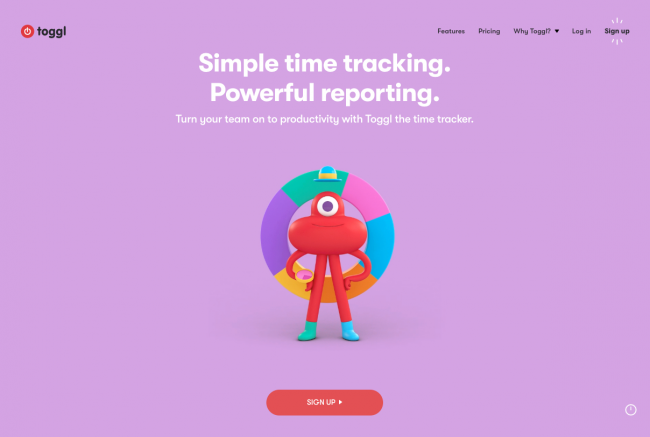
Image via Pixabay.
Do you know where your time goes? Yes, you’re busy, and it feels like you’re working all the time. But do you actually know how many minutes and hours in the day are spent moving the needle on your most critical projects?
What about your team?
You see Robert at his computer every day when you arrive and he’s still there when you leave, but are his 10-hour days consistently checking off those to-do boxes?
What work is actually getting done?
If you’re a knowledge worker in a traditional office, the answer is surprisingly little.
A recent study found that, on average, full-time office workers are actually productive for just under 3 hours each day. Those other 5 hours go to a variety of online and in-office distractions.
For a company that relies on client business, 3 hours a day is just not going to cut it.
That’s also why it’s such a big challenge to give accurate estimates in client proposals.
Here’s how you can change that…
Understanding Your Utilization Rate
Whether you bill your clients by the hour, offer project-based pricing, or use a subscription model, the time that you spend on client work directly translates to cash on hand. Those pesky administrative tasks, all-too-frequent internal meetings, and coffee breaks? Not so much.
That’s why so many client-based businesses rely on utilization rates.
Put simply, utilization rate is the percent of total time worked that someone actually spends on revenue-generating tasks.
If you bill your clients according to the total hours spent by your team on client projects, then determining a utilization rate is easy—it’s the total number of billable hours someone logs divided by the total number of hours they were expected to work.
For example, in a typical 40-hour work week, if you put in 40 hours of billable time, your utilization rate would be 100%.
But that’s unrealistic.
With all the day-to-day activities necessary for project planning, communicating, and generating new business, it’s almost inevitable that a portion of each week goes to work that, while essential, is not billable.
So, what’s a reasonable utilization rate for your business?
For those office workers in the study, it was 38%. That may seem extreme, but on average lawyers’ utilization rate is 29%. They know that they’re going to do roughly 2 hours of unbillable work for every billable hour in their day, and they set their hourly rates accordingly. Professional services firms, on the other hand, aim for a 75% utilization rate, at minimum.
The lesson here is: don’t plan your budget assuming a 100% utilization rate for all team members for all weeks throughout the year.
That’s a good way to go out of business. Having an accurate, data-based understanding of your utilization rate will help you set realistic budgets and determine how much new business you need, and can handle, to keep the doors open.
Track Your Time — Consistently
The only way to really know where your time goes is to track it. Using an easy time-tracking tool like Toggl, you can log every minute of your work day (or every second, if you want) and assign tracked time to clients, projects, and tasks within projects.
You can flag the time as billable or not, and set different billable rates based on the employee doing the work, or based on the customer.
Getting everyone on your team to track their time consistently may be a bit of a hard sell at first, but that’s why Toggl makes time-tracking so easy.
“Toggl makes it easy to track our work,” says Ionut-Cristian Paraschiv, Co-Founder of 3angleTech. “From a web browser to mobile apps on our smartphones or tablets, we can see exactly how much time we spend doing real work and how many of our working hours are not optimally used.”
When everyone on the team feels like they are personally benefiting from time-tracking, it’s easy to establish a culture of consistent time-tracking within your company.
At RogueMark Studios, employees became genuinely excited about tracking their time when they saw that data generated by their time reports led to improved billing and more equitable compensation based on the work they were actually doing.
Knowing precisely where your time goes can be really powerful. It’s the first step in creating more accurate proposals and repeat business.
Craft Better Client Proposals
Once you have accumulated a fair amount of accurate time data over a number of clients and projects, you’ll have a much clearer understanding of how your team works and what it actually takes to successfully deliver different types of jobs.
You can then use this information to generate more accurate forecasts of both the time and budget needed for a given client, based on how long similar work has taken you in the past.
“Toggl has given us actual data about our labor; we’re able to see how much time each step of our creative process takes,” says Bethany Kaylor of RogueMark Studios. “It has allowed us to reconfigure our budgets, contracts, and schedules to more accurately match a realistic timeline.”
When developing a new proposal for a client, create an accompanying time budget.
Build-in appropriate buffers for if team members are out sick, set a realistic utilization rate, and allocate a specific number of hours to each task within the project.
You can then use your time budget as a lightweight project management tool.
Within Toggl, Kaylor can compare how much time they have remaining in their time budget for a certain part of their process.
For example, if 50 hours have been allocated for storyboarding, and they’ve already used 35, they can adapt those last 15 hours to stay on-budget and on-schedule.
What about change requests?
You can also use a time budget to help make decisions about change-requests and project extensions. Revelation PR, Advertising & Social Media agency president, Brian Lee, says, “I appreciate that I can now see how far along we are in the budget for a project at any given time, and that allows me to either accept or defer additional tasks within the project.”
Just because internally you have developed a detailed break-down of a project and its associated budget, however, does not mean that the same level of detail needs to be communicated to the client.
Remember when crafting a winning proposal to think in “fee packages” that keep pricing information high level and easy to digest.
Include Time Reports with Customer Invoices
Trust is an essential part of the client relationship. One way to improve and validate that trust is to include time reports with your customer invoices, showing the time spent by the team on each aspect of the project.
Not only do such reports impress by making you look the consummate professional, but they also help clients clearly see the cost of their ideas.
When presented with project time reports, clients can then “refocus on product features that provide the best balance between cost, time invested, and business benefits,” Paraschiv says. “Our customers love the transparency that Toggl offers, and including Toggl reports with billing increases their trust, because they can see that they are paying only for work done.”
Demonstrating the time and effort you put into a project in this way can result in improved client retention. Because who doesn’t want to know that they’re getting what they’re paying for?




